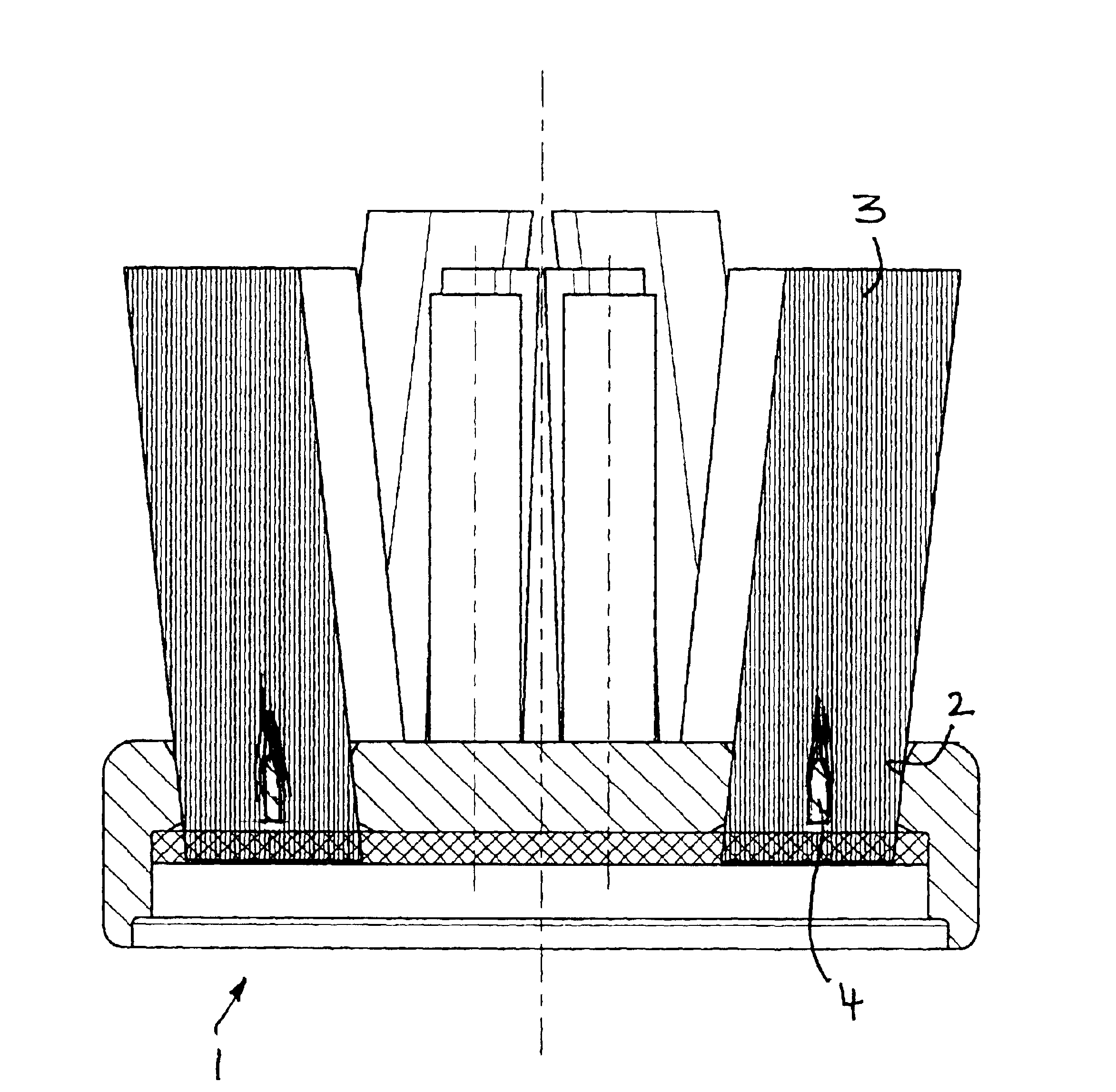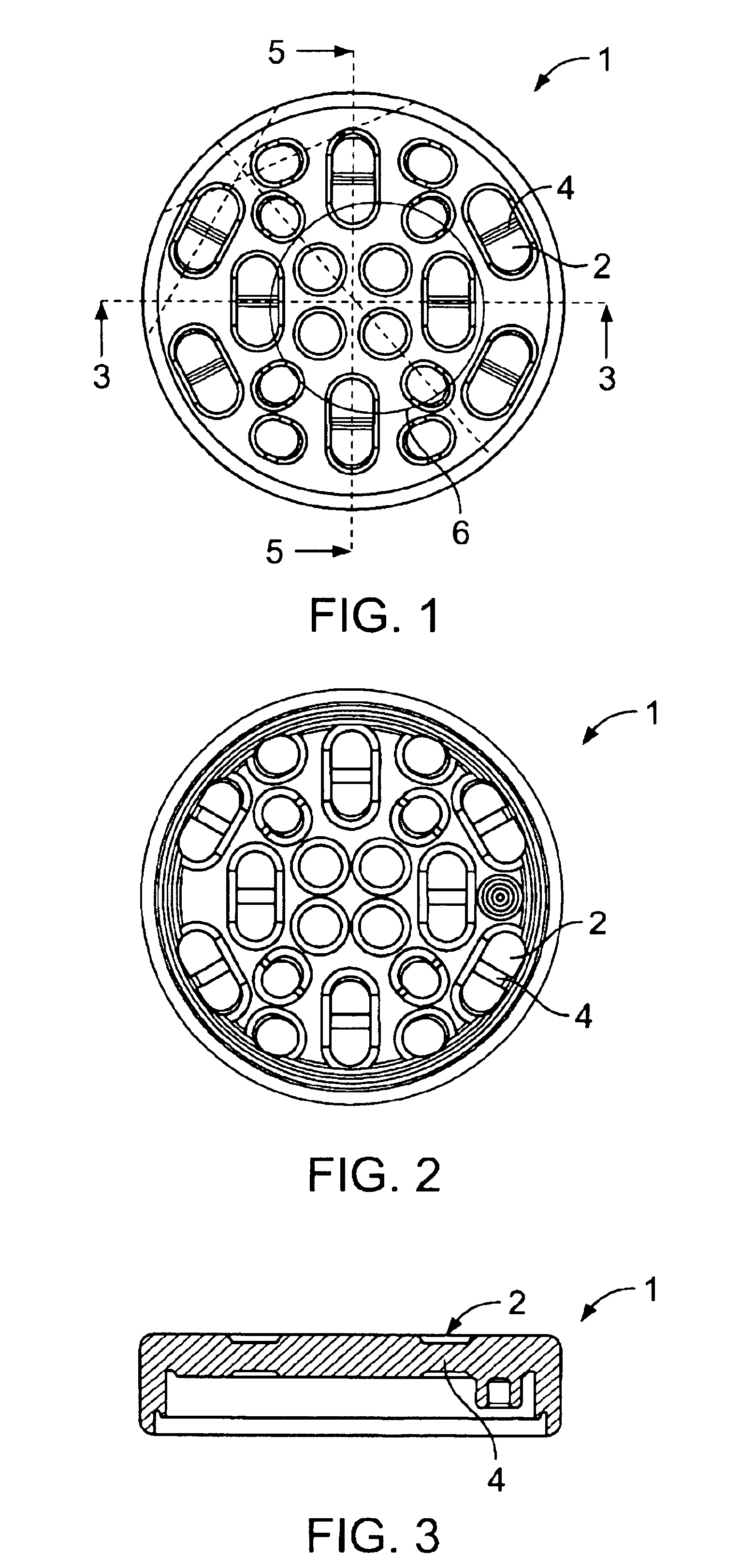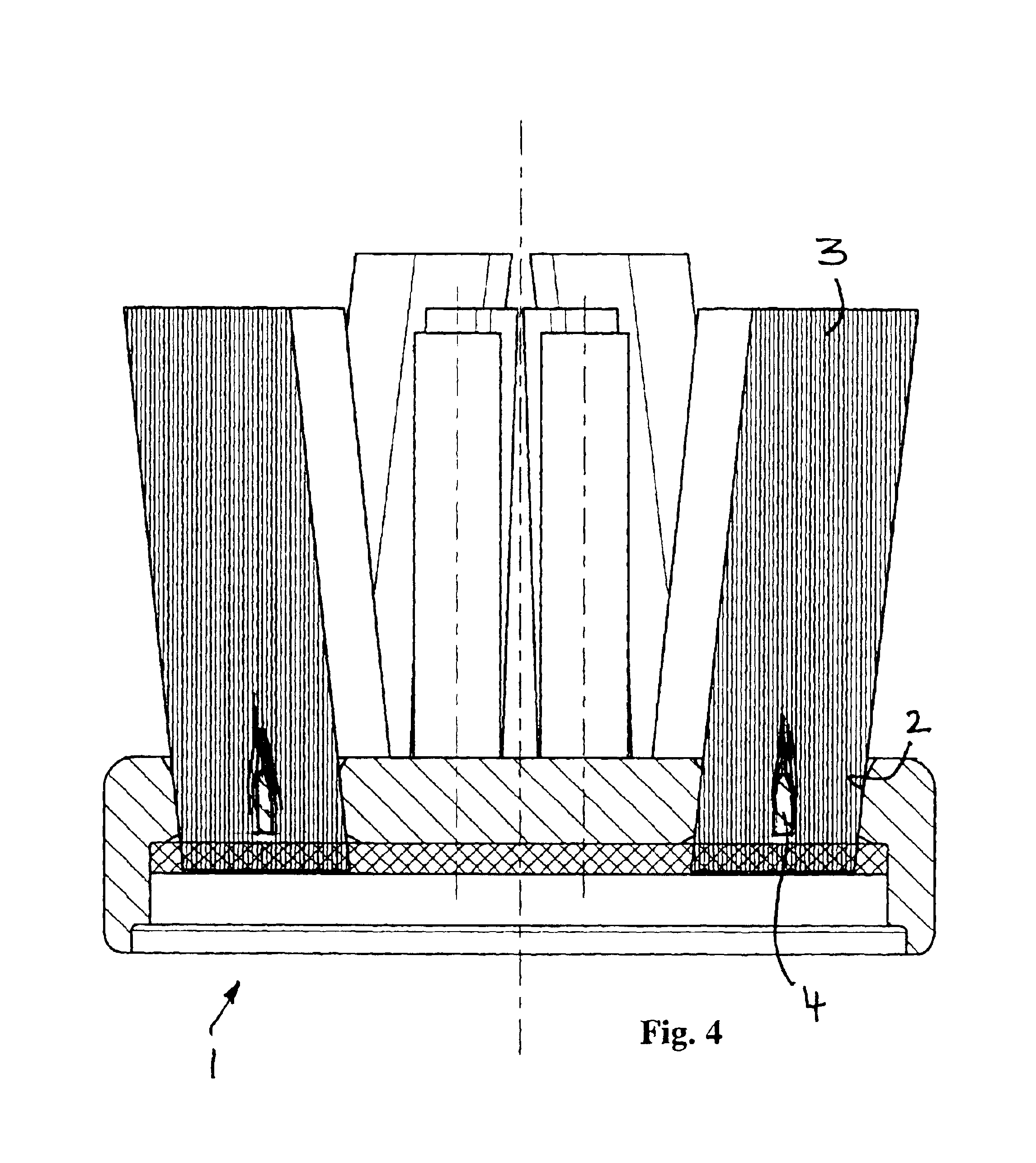Toothbrush head with anchor-free bristle tufting
- Summary
- Abstract
- Description
- Claims
- Application Information
AI Technical Summary
Benefits of technology
Problems solved by technology
Method used
Image
Examples
Embodiment Construction
[0038]FIGS. 1 to 3 show the bristle carrier 1, which is essentially constructed as a plane disk with peripheral edges projecting downward which are designed to be secured to the bottom part of a toothbrush head of an electric toothbrush in a snap-fit arrangement or by welding in a manner known in the art. The bristle carrier 1 has a multiplicity of through-holes 2, part of which is of an essentially circular configuration. The balance of the through-holes is constructed as elongate holes (cf. FIG. 1 and FIG. 2). The entire bristle carrier 1 is manufactured as a plastic injection-molded part. The through-holes 2 can be formed simultaneously with the injection-molding operation.
[0039]As is shown in FIG. 4, a multiplicity of bristles is arranged in the holes 2 in the bristle carrier 1 so that they are seated in the holes 2 in the form of tufts 3. Each hole 2 receives one tuft 3 which, as FIG. 4 shows, can be arranged at different angles of tilt. The tufts 3 also have different outer co...
PUM
 Login to View More
Login to View More Abstract
Description
Claims
Application Information
 Login to View More
Login to View More - R&D
- Intellectual Property
- Life Sciences
- Materials
- Tech Scout
- Unparalleled Data Quality
- Higher Quality Content
- 60% Fewer Hallucinations
Browse by: Latest US Patents, China's latest patents, Technical Efficacy Thesaurus, Application Domain, Technology Topic, Popular Technical Reports.
© 2025 PatSnap. All rights reserved.Legal|Privacy policy|Modern Slavery Act Transparency Statement|Sitemap|About US| Contact US: help@patsnap.com



